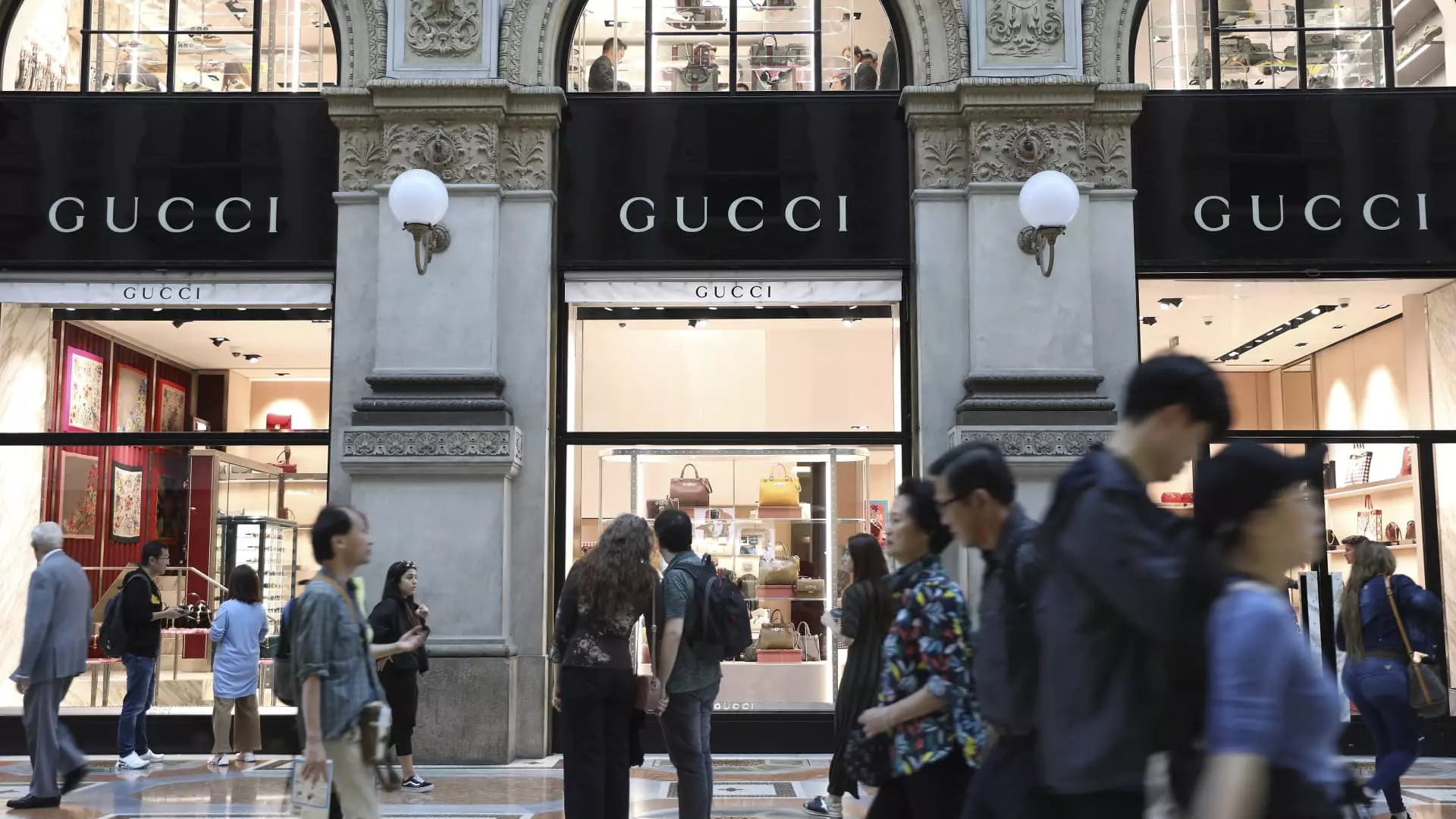The luxury sector in Europe, often deemed a bellwether for global consumer sentiment, appears to be experiencing a tentative revival following a promising earnings season. However, the journey to recovery is fraught with complexities stemming from declining demand in China and potential trade tariffs in the U.S. As analysts scrutinize the market, it becomes clear that while there are glimmers of hope, significant challenges lie ahead for even the most esteemed luxury brands.
Injust one quarter, the luxury sector has experienced standout performances that hint at a broader recovery. Simone Ragazzi, portfolio manager at Algebris Investments, indicated through a recent video interview that 2024 has been particularly harsh for luxury brands, but he foresees a normalization trajectory for the second half of 2025. Luxury stalwarts such as Hermès have recently reported remarkable sales figures, signaling that consumer appetite may still exist for premium goods. This revival is not isolated to Hermès; even brands like LVMH and Kering, which have faced difficulties in the past, outperformed expectations during this latest earnings period.
Financial results also seem to affirm predictions of a cyclical comeback, especially considering Cartier-owner Richemont’s record sales. Luca Solca of Bernstein points out that this rebound may largely be fueled by consumer spending in both the U.S. and European markets, suggesting that economic conditions in these regions are more favorable for luxury sales compared to China, which has historically been a powerhouse for luxury consumption.
Despite the celebratory narratives surrounding earnings, analysts continue to emphasize that uncertainty looms over the luxury market, particularly due to ongoing struggles in China. Brands like L’Oréal and Gucci, which have substantial exposure to the Chinese market, revealed declines in sales that underscore a worrying trend. China’s consumption shift—which has been layered with macroeconomic instability—raises alarms about the sustainability of the growth witnessed in other regions.
Furthermore, the implications of potential U.S. tariffs under the Trump administration remain a critical point of discussion. Zuzanna Pusz of UBS contends that these tariffs could create economic ripples that might affect consumer behavior negatively by driving prices up. Luxury firms may feel the squeeze to pass on costs to consumers, which could further elongate the gap between premium brands and others struggling to maintain market share in a contracting marketplace.
The luxury sector’s inherent characteristics add layers of complexity to the potential impact of tariffs. For many high-end brands, processes and production are often localized, making it difficult to shift operations abroad in response to tariffs. The ‘Made in Italy’ phenomenon demonstrates that authenticity and craftsmanship are intrinsic to luxury branding; simply shifting production will not suffice. Pusz highlights this aspect and points out that, while certain brands might have some protection from high tariffs, they could still face repercussions should the broader economy feel the strain of elevated costs.
Ragazzi mentions potential pain points where brands could fail to justify steep prices, particularly as consumer confidence wanes. This situation could fuel a phase where consumers become more selective, prioritizing brands that resonate with their values and lifestyle over others that fail to evoke strong emotional connections.
The present landscape also demands luxury brands to adapt to new consumer expectations—shifting from sheer abundance to discernment. Carole Madjo, head of luxury goods research at Barclays, pinpoints a mounting need for innovation among brands that have remained static amidst their high price structures. As consumers become increasingly thoughtful about their purchases, the luxury sector may find itself in a critical space needing to deliver more than just exclusivity.
The prevailing mantra seems to be “buying less but buying better,” which translates to a heightened expectation for quality and uniqueness. Analysts posit that brands that manage to offer exceptional products tailored to discerning consumers are likely to outperform their competitors during what is shaping up to be a complicated recovery.
As the luxury sector navigates its winding road to recovery, it becomes apparent that the definitions of luxury are evolving. With ongoing challenges illuminating the paths of premier brands, one must consider how these companies can innovate while maintaining their heritage. The acute divergence between top-tier and struggling brands presents an ever-important question about sustainability and consumer connectivity in an increasingly selective marketplace. As we look toward 2025, it’s apparent that the ability to adapt is key to survival in this challenging yet promising sector.


Leave a Reply